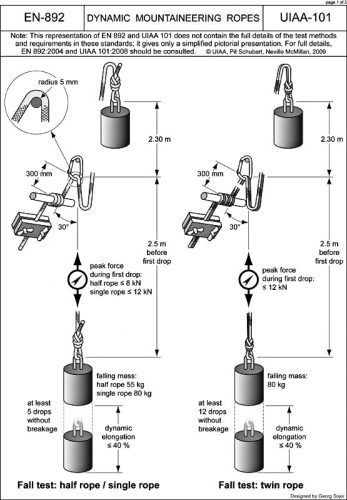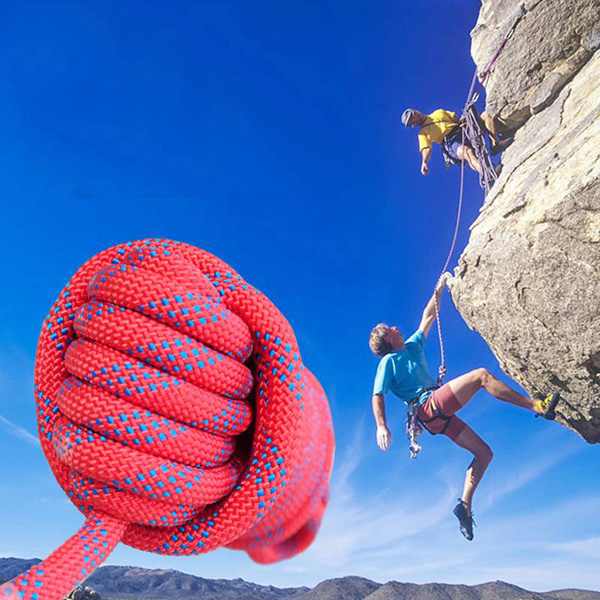Everything You Need to Know about Rock Climbing Ropes
When you're suspended 50 feet from the ground, it's important to trust your equipment. Knowing a lot about climbing ropes may help ease your fears, so you can relax and focus without worrying about whether your gear will catch you.
When you're suspended 50 feet from the ground, it's important to trust your equipment. Knowing a lot about climbing ropes may help ease your fears, so you can relax and focus without worrying about whether your gear will catch you.
Today we take a look at some of the most common questions about ropes that beginners have when they start exploring climbing gear.
What is the difference between the types of climbing ropes?
Diamond Tool are the type of rope that most climbers use. They are marked 1 at the end of the rope. a single rope means it is intended to be used alone, not in combination with another rope like other types of climbing ropes (such as double and half ropes).
This article will focus on single ropes because they are the type of ropes you want to look for as a beginner.
The two main types of ropes are static and dynamic. Static ropes are designed not to stretch too much, while dynamic ropes will stretch and are usually lighter and more flexible. Most top ropers and lead climbers prefer to use dynamic ropes because they provide a softer grip when you fall.
Ropes also come in different diameters, so smaller ropes will be lighter, although they wear out faster than thicker ropes.
Most modern climbing ropes are dried to help prevent them from absorbing water, and you'll see those referred to as dry ropes.
What are climbing ropes made of?
Most modern climbing ropes are made of nylon. Nylon is a strong industrial fiber that is designed to withstand physical stress and degrades more slowly than most organic fibers.
Repeated exposure to moisture, direct sunlight and extreme temperatures can affect the strength and quality of nylon, so be sure to keep your rope in good hands.
How is climbing rope made?
The core of a climbing rope is made from individual nylon threads that are twisted together to form a yarn. The core is then wrapped in a separate sheath of nylon thread that is woven into the sheath to shield and protect it.
Some climbing rope manufacturers will mark the sheath with something like a midway mark, or use a different pattern on each half of the rope so you know when you reach the middle of the rope. It's important to know the middle of the rope because you need twice the climbing height to have enough rope to lower you back to the ground.
How much weight and force can they support?
Climbing ropes are measured with an impact force which is tested with a mass of 80 kg. The weight that can be suspended from the rope is not as important as the force of that weight falling on the rope. Since the forces used to test ropes are much greater than real-world climbing falls, they are designed to ensure that they can safely withstand regular use.

How are climbing ropes tested?
The UIAA is an international association that provides standards for climbing rope testing, and all climbing ropes sold must pass their certification standards. Equipment that passes the UIAA standard will carry the UIAA safety label.

Scores for different ropes vary from rope to rope and the results fall into the following categories.
Dynamic elongation: the distance the rope extends during the first drop in the test. Larger numbers usually mean that you will not stop suddenly when you fall, although protection techniques can affect this as well.
Static elongation: the amount the rope stretches at 80 kg weight. This may not be too noticeable in terms of comfort.
Impact force: The magnitude of the fall force used in the test, measured in kilonewtons.
Drop rating: the number of drops the rope can withstand. A higher number means it supports more falls before it fails.
How should I store my climbing rope?
While you can wrap your rope tightly to pack and carry it with you on the climb, in the long run it is best to leave it slightly loose.
Your climbing rope should be stored out of direct sunlight and in a dry environment, away from harsh temperatures.
When should I replace my climbing rope?
The life of your climbing rope depends on how much you use it, how many falls you take, how you store it, and general wear and tear. Check the rope every time you use it. If the rope appears damaged, it's time to get a new one. Likewise, if the core of the rope becomes soft or exposed outside the outer skin.
It is especially important to stop using if taking too many high factor falls. the UIAA sets a high factor fall rate at any factor over 1.78.
The fall factor is the distance of the fall divided by how many ropes were used. Most of the falls you will make in the gym, especially as a beginner, will be low factor, and you will learn what a high factor fall feels like by the painful impact of the harness on the catch.
While a good climbing rope will last for years, many climbers change their ropes every season.
What is the best rope for rock climbing?
Now that you know about rope length, thickness, weight and testing standards, let's take a look at some of the best selling ropes and hopefully this will give you an idea of what to look for in your next rope.


